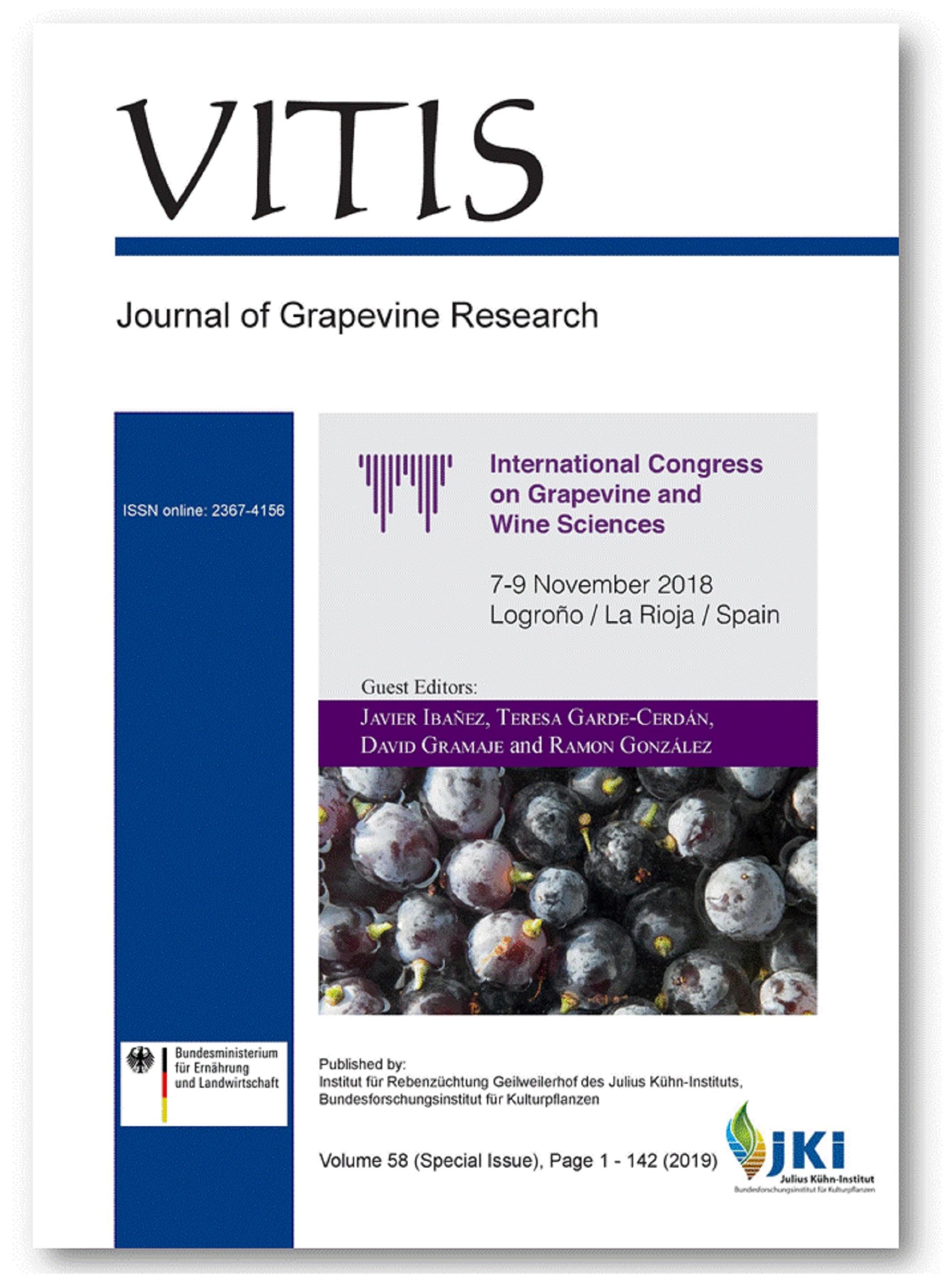Effect of environmental conditions and phenology in the dispersal of secondary Erysiphe necator conidia in a vineyard
DOI:
https://doi.org/10.5073/vitis.2019.58.special-issue.49-58Keywords:
Erysiphe necator; P-days, conidia dispersal; grapevine; airborne spores forecast.Abstract
An integrated powdery mildew management strategy to identify the principal moments of secondary Erysiphe necator conidia dispersal in a vineyard based on aerobiological, phenological and meteorological data was developed. An adaptation of the physiological P-days model was conducted to obtain a descriptive equation for the prediction of the advantageous meteorological conditions for Erysiphe necator conidia dispersal in the vineyards of the Ribeiro Designation of Origin area. Moreover, a regression model was developed to predict the conidia concentration as a function of the weather and aerobiological variables with the highest influence on airborne E. necator spores. Additionally, phenological observations were conducted during the vegetative cycle of Vitis vinifera, with the aim to identify the most susceptible phenological stages to powdery mildew infection by relating them with the detected atmospheric spore concentrations. The study was carried out from 2008 to 2018 in an experimental vineyard. The E. necator spores were trapped using a Lanzoni VPPS-2000 sampler and the phenological observations were conducted following the BBCH standardized scale. The highest total fungal spore amount per season in the atmosphere of the vineyard was detected in 2013 with 4828 spores m-3, while the lowest amount was recorded in 2009 with 883 spores m-3. In general, the highest daily airborne spore concentrations were detected during the Flowering (stage 6) or in the previous and next stages, whereas the maximum total spore amount by stage was recorded during Development of Fruits (stage 7). The proposed threshold of P-days for potential secondary infections in the Ribeiro D.O. ranges from 120 to 160 P-days. The combination of aerobiological, phenological and meteorological data provides us a useful tool for the knowledge of the Erysiphe necator conidia dispersal behaviour bringing agricultural practices closer to a sustainable system.
Downloads
Published
Issue
Section
License
The content of VITIS is published under a Creative Commons Attribution 4.0 license. Any user is free to share and adapt (remix, transform, build upon) the content as long as the original publication is attributed (authors, title, year, journal, issue, pages) and any changes to the original are clearly labeled. We do not prohibit or charge a fee for reuse of published content. The use of general descriptive names, trade names, trademarks, and so forth in any publication herein, even if not specifically indicated, does not imply that these names are not protected by the relevant laws and regulations. The submitting author agrees to these terms on behalf of all co-authors when submitting a manuscript. Please be aware that this license cannot be revoked. All authors retain the copyright on their work and are able to enter into separate, additional contractual arrangements.



